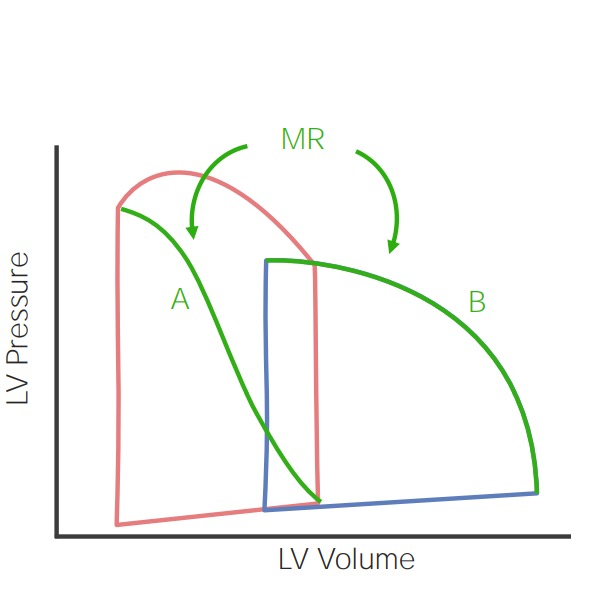Playlist
Show Playlist
Hide Playlist
Mitral Regurgitation: Signs, Symptoms, Diagnosis and Treatment
-
Slides Valvular Heart Disease Mitral Regurgitation Cardiovascular Pathology.pdf
-
Download Lecture Overview
00:01 Regurge, the most common symptom, progressive dyspnea on exertion. 00:04 Don't you even feel like a broken record right now? Say any type of valvular heart disease that is nonspecific finding. 00:11 Physical examination, what kind of murmur between S1 and S2? It's holosystolic murmur. 00:16 Because of backward regurgitation. 00:19 It's heard where again? It's a systolic murmur heard at the apex. 00:24 Where is that? It is by your fifth intercostal space. 00:28 Now, here it could potentially be located maybe laterally displaced because you have a larger, larger left ventricle. 00:35 But this is a systolic murmur. Holosystolic. 00:39 Blowing quality. Pulmunary rales, sure, especially with acute. 00:44 Echo, you're gonna find regurgitation. You find a large left ventricle. 00:48 Surgical replacement of the valve and maybe if it's bad enough, surgery should be performed before the onset of CHF. 00:56 It's one of those things that you worry about immediately because of volume overload to the left ventricle but really, with any type of valvular heart diseases, you wanna prevent your patient from going into heart failure. 01:06 It is imperative as you being a first-year resident to make sure that your auscultatory skills on the chest is second to none. 01:17 It's amazing as to how many lives you'd be able to save. 01:20 Symptoms of CHF should be treated. Goal of medical therapy, what are you trying to do here? You're trying to get it so that you reduce the afterload and you try to decrease the pulmonary veins and that may result in hypertension at some point. 01:34 I guess that those would be more of the medical therapy and you're doing everything in your power to make sure that you prevent the patient from going into further congestive heart failure.
About the Lecture
The lecture Mitral Regurgitation: Signs, Symptoms, Diagnosis and Treatment by Carlo Raj, MD is from the course Valvular Heart Disease: Basic Principles with Carlo Raj.
Included Quiz Questions
Which of the following best describes the murmur in mitral regurgitation?
- Blowing holosystolic murmur, best heard at the apex, and radiating to the axilla
- Midsystolic click followed by a late systolic decrescendo murmur
- Ejection type (crescendo-decrescendo) systolic murmur
- Opening snap followed by a mid-diastolic rumble
- Machinery type of pansystolic murmur
Which of the following statements is TRUE regarding the management of mitral regurgitation?
- The goal of medical therapy is to reduce afterload.
- Surgery is indicated for mild MR upon diagnosis to prevent symptoms from developing.
- Medical therapy is often as efficacious as surgical valve replacement.
- Echocardiography does not add diagnostic benefits since MR can be diagnosed on a physical exam.
- The goal of medical therapy is to reduce preload.
Customer reviews
5,0 of 5 stars
| 5 Stars |
|
5 |
| 4 Stars |
|
0 |
| 3 Stars |
|
0 |
| 2 Stars |
|
0 |
| 1 Star |
|
0 |




